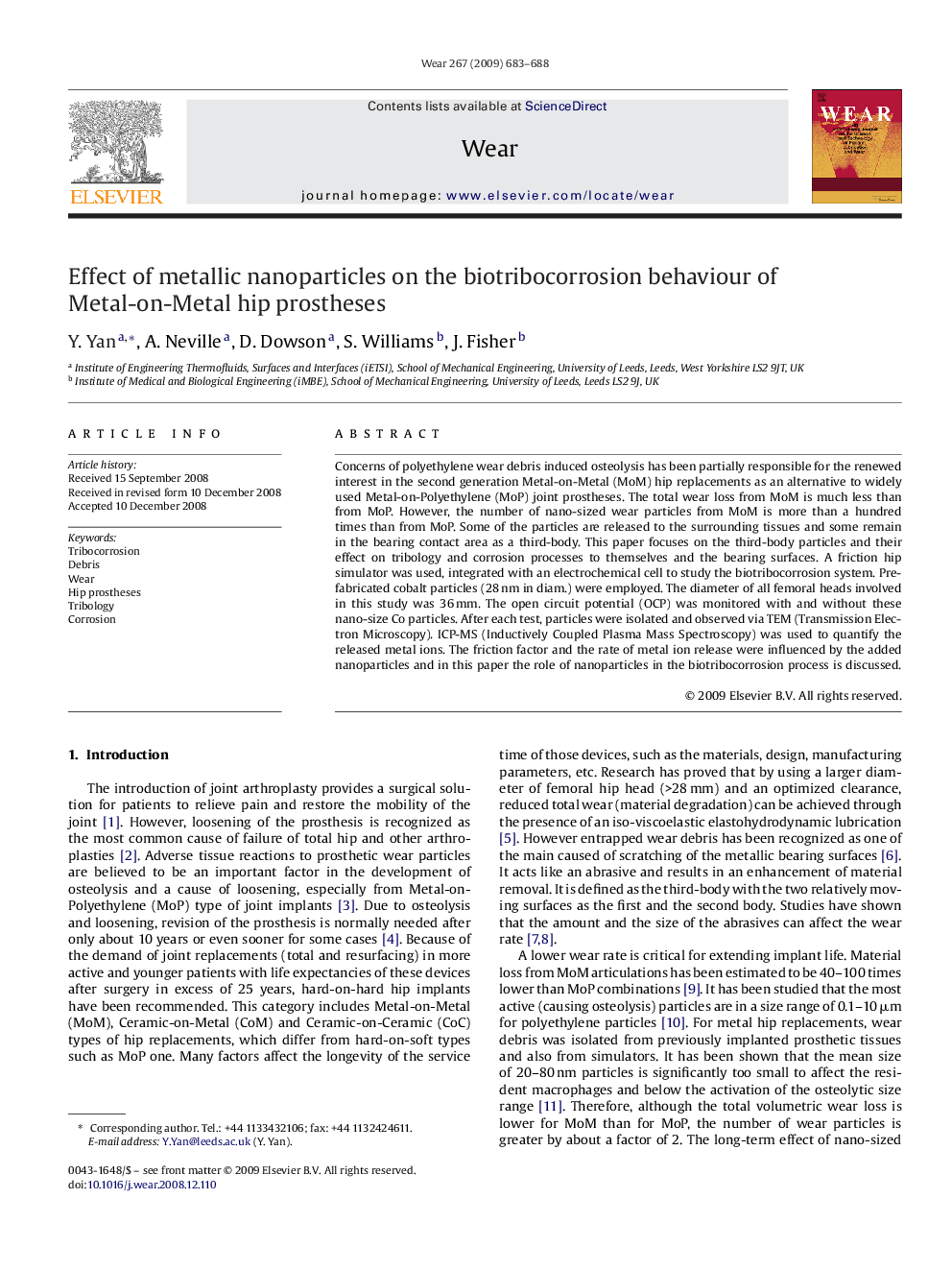| Article ID | Journal | Published Year | Pages | File Type |
|---|---|---|---|---|
| 619316 | Wear | 2009 | 6 Pages |
Concerns of polyethylene wear debris induced osteolysis has been partially responsible for the renewed interest in the second generation Metal-on-Metal (MoM) hip replacements as an alternative to widely used Metal-on-Polyethylene (MoP) joint prostheses. The total wear loss from MoM is much less than from MoP. However, the number of nano-sized wear particles from MoM is more than a hundred times than from MoP. Some of the particles are released to the surrounding tissues and some remain in the bearing contact area as a third-body. This paper focuses on the third-body particles and their effect on tribology and corrosion processes to themselves and the bearing surfaces. A friction hip simulator was used, integrated with an electrochemical cell to study the biotribocorrosion system. Pre-fabricated cobalt particles (28 nm in diam.) were employed. The diameter of all femoral heads involved in this study was 36 mm. The open circuit potential (OCP) was monitored with and without these nano-size Co particles. After each test, particles were isolated and observed via TEM (Transmission Electron Microscopy). ICP-MS (Inductively Coupled Plasma Mass Spectroscopy) was used to quantify the released metal ions. The friction factor and the rate of metal ion release were influenced by the added nanoparticles and in this paper the role of nanoparticles in the biotribocorrosion process is discussed.
